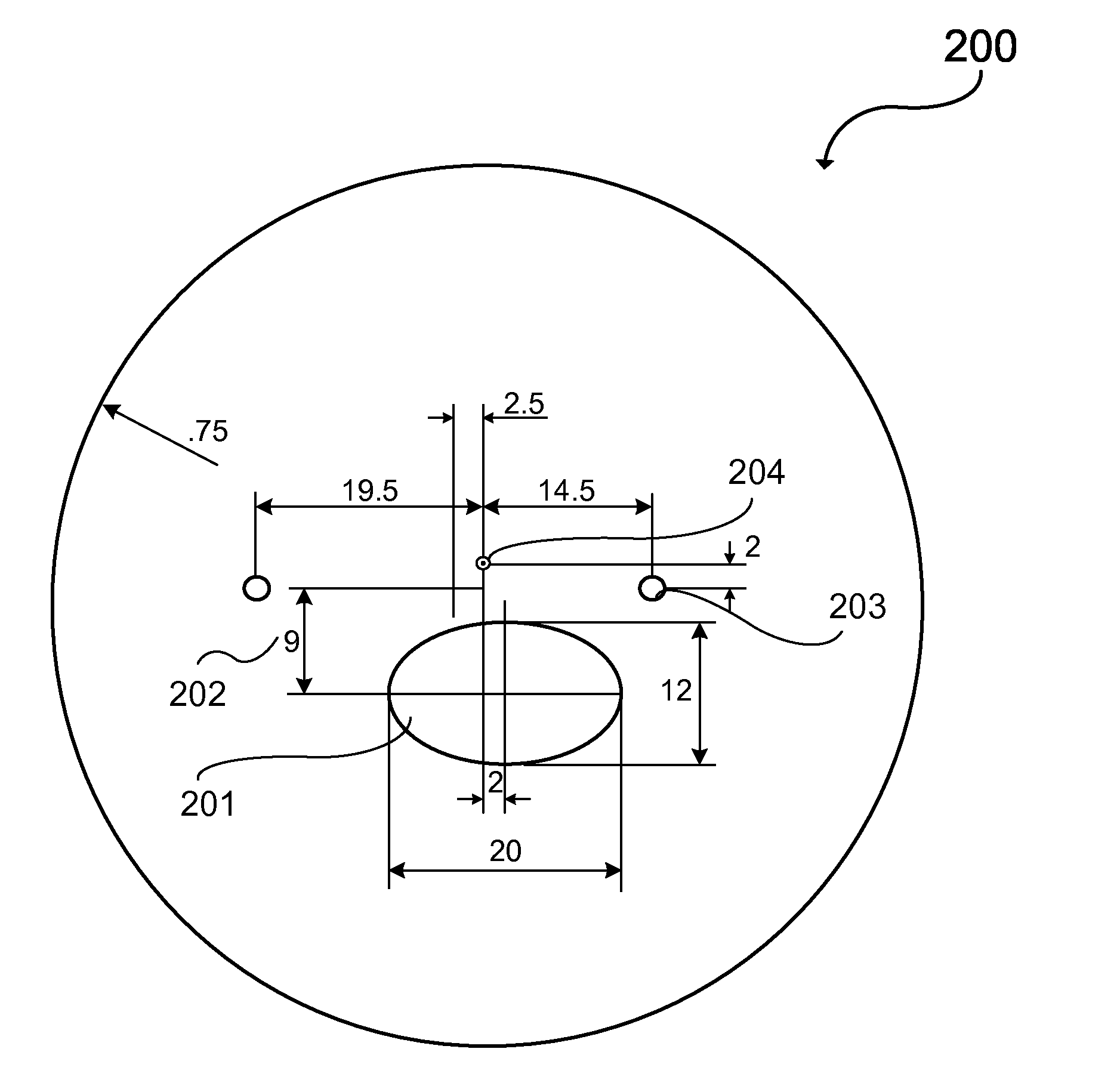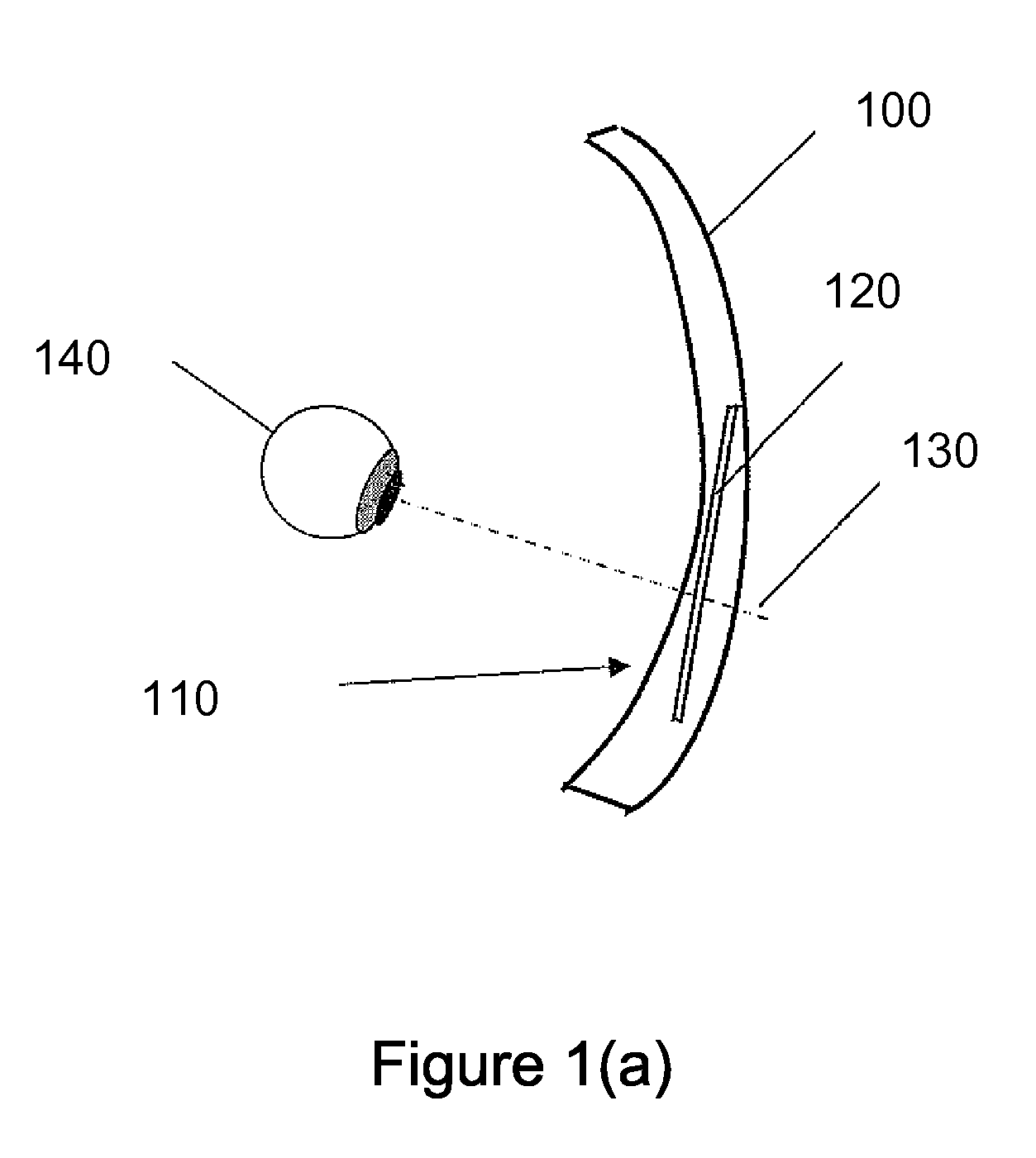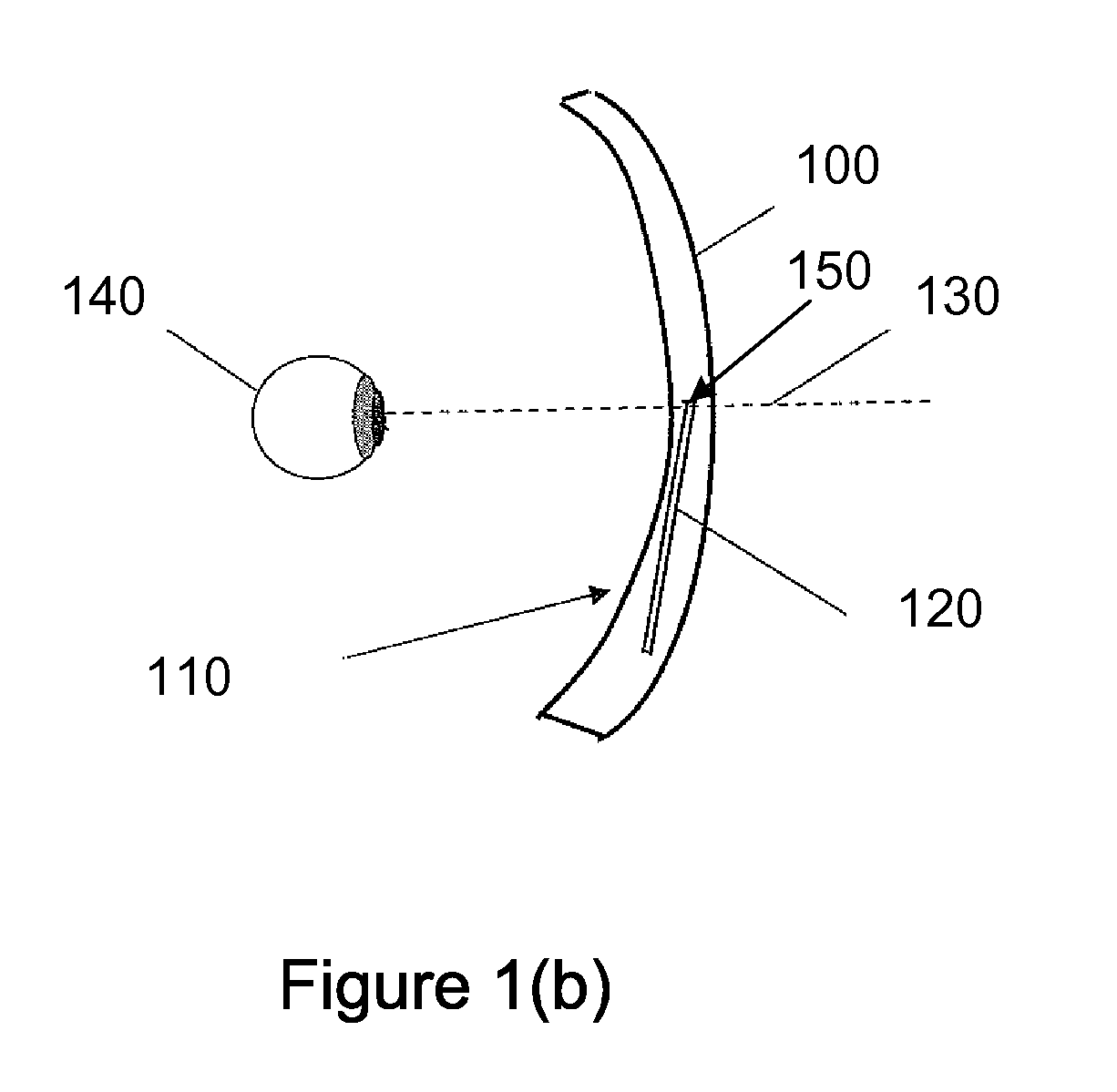Reduction of image jump
- Summary
- Abstract
- Description
- Claims
- Application Information
AI Technical Summary
Benefits of technology
Problems solved by technology
Method used
Image
Examples
Embodiment Construction
[0040]Many ophthalmological, optometric, and optical terms are used in this application. For the sake of clarity, their definitions are listed below:
[0041]Add Power: The optical power added to the far distance viewing optical power which is required for clear near distance viewing in a multifocal lens. For example, if an individual has a far distance viewing prescription of −3.00 D with a +2.00 D add power for near distance viewing then the actual optical power in the near distance portion of the multifocal lens is −1.00 D. Add power is sometimes referred to as plus power. Add power may be further distinguished by referring to “near viewing distance add power” which refers to the add power in the near viewing distance portion of the lens and “intermediate viewing distance add power” which refers to the add power in the intermediate viewing distance portion of the lens. Typically, the intermediate viewing distance add power is approximately 50% of the near viewing distance add power....
PUM
 Login to View More
Login to View More Abstract
Description
Claims
Application Information
 Login to View More
Login to View More - R&D
- Intellectual Property
- Life Sciences
- Materials
- Tech Scout
- Unparalleled Data Quality
- Higher Quality Content
- 60% Fewer Hallucinations
Browse by: Latest US Patents, China's latest patents, Technical Efficacy Thesaurus, Application Domain, Technology Topic, Popular Technical Reports.
© 2025 PatSnap. All rights reserved.Legal|Privacy policy|Modern Slavery Act Transparency Statement|Sitemap|About US| Contact US: help@patsnap.com



